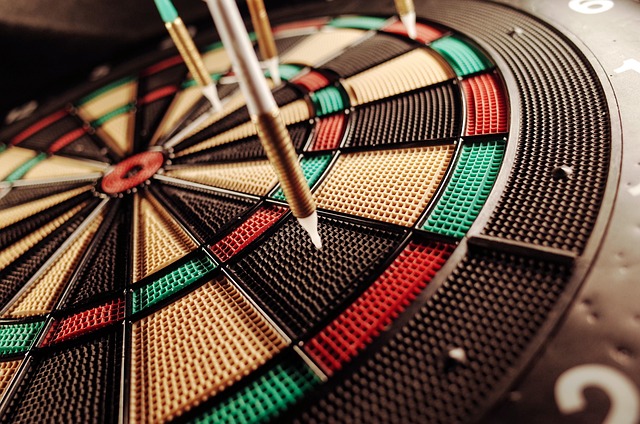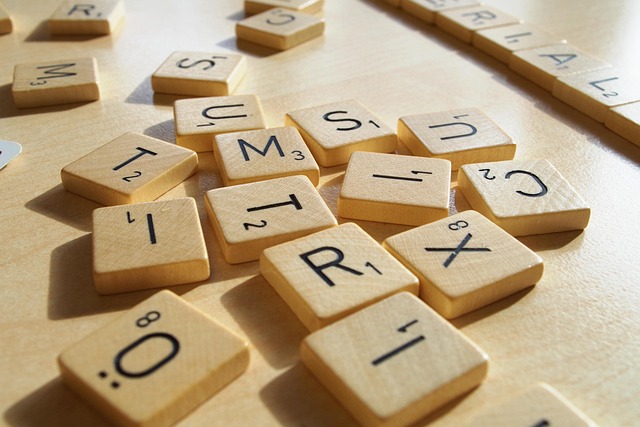Designing a successful board game involves choosing broad themes and tailoring mechanics to diverse audiences. Create engaging gameplay loops with unique theme-tied mechanics, clear rules, and variable elements for enhanced replayability. Seamlessly integrate physical and conceptual designs, including educational aspects. Craft distinct components like playing pieces and cards, and consider AR for interactivity. Thorough testing and refining based on feedback ensure a captivating game that fosters strategic thinking.
Creating a board game is an exciting endeavor that can bring hours of enjoyment. This comprehensive guide takes you through every step, from choosing a captivating theme suitable for your target audience to refining the gameplay. Learn how to design intricate mechanics and establish clear rules. Discover tips for crafting a visually appealing board, designing engaging playing pieces, and developing cards that enhance the overall experience. Test, iterate, and perfect your creation until it becomes the ultimate game night sensation!
- Choose Theme and Target Audience
- Design Game Mechanics and Rules
- Create Game Board and Components
- Develop Playing Pieces and Cards
- Test and Refine the Game
Choose Theme and Target Audience

Choosing a theme and understanding your target audience are pivotal steps in designing a captivating board game. The game should be tailored to resonate with players, offering an engaging experience that aligns with their interests. Consider what themes have broad appeal; for instance, adventure, fantasy, or even historical events can attract diverse audiences.
When selecting a target demographic, keep in mind that different age groups and skill levels may prefer distinct game mechanics. For example, games targeting younger players might focus on simple rules and visual elements, while those aimed at adults could incorporate complex strategies and deep narrative elements. This considerations will guide your design process, ensuring the game is accessible yet challenging for your intended audience, and fostering a positive experience that encourages repeat plays. Remember, effective theme selection and audience understanding are key to creating a successful board game. Give us a call at information literacy training for more insights on game development.
Design Game Mechanics and Rules

Designing game mechanics and rules is a crucial step in creating an engaging board game that captivates players. Start by envisioning the core gameplay loop, considering elements like resource management, player interaction, and goal achievement. For instance, will your game involve collecting resources, trading with opponents, or navigating social studies scenarios? The key is to create a balance between strategy and luck, ensuring each decision matters.
Incorporate unique mechanics that align with your game’s theme. Are you aiming for exam stress reduction through strategic planning or fostering debate strategies among players? Think about how moves can be both challenging and rewarding, encouraging critical thinking while providing opportunities for social interaction. Once satisfied with the core gameplay, translate these concepts into clear rules, ensuring fairness and consistency. Remember, a well-designed game encourages replayability, so consider ways to introduce variability and unpredictability, whether through random events or dynamic objectives. Eventually, test and refine your rules, finding the perfect balance that makes your board game stand out from others, even those in the realm of entrepreneurship simulations we offer.
Create Game Board and Components

Creating a board game involves designing both physical and conceptual elements that work together seamlessly to engage players. To begin, envision your game’s theme and mechanics. Once you have a clear idea, it’s time to create Game Board and Components. This step is where your game comes to life visually.
Design the game board with care, considering its layout, color scheme, and overall aesthetics. Think about how players will navigate the board – through dice rolls, card draws, or other means. Alongside the board, craft the necessary components like figures, cards, tokens, and dice. For a truly interactive experience, integrate elements that encourage public speaking tips and cyberbullying prevention, making your game not just fun but also educational. Even if your theme isn’t directly related to these topics, creative use of components can subtly promote empathy and communication skills. Remember to keep the rules clear and concise, and test out the board with friends or family to ensure a well-rounded and enjoyable interactive presentations experience. Find us at global economic scenarios for more inspiration on creating engaging games that transcend mere entertainment.
Develop Playing Pieces and Cards

To bring your board game to life, one of the most exciting steps is creating its core components—the playing pieces and cards. These elements are not just decorative; they actively contribute to the gameplay, strategy, and overall experience. Start by conceptualizing unique and engaging figures that represent players in the game. Consider their design, color, size, and any distinctive features that will make them memorable. For instance, if your game is set in a medieval realm, you might craft knights, wizards, or peasants as playing pieces.
Additionally, cards are a vital part of many board games, adding depth and versatility to gameplay. Design decks with different types of cards tailored to specific actions, challenges, or rewards. For example, in a fantasy-themed game, your cards could include spells, weapons, or magical creatures. Incorporate digital real-world applications by integrating augmented reality (AR) elements into your card design, allowing players to interact with their cards in innovative ways. Ensure that both the playing pieces and cards align with your game’s theme while fostering strategic thinking and encouraging players to develop digital research skills to uncover hidden meanings or abilities. Remember to follow online safety protocols anytime you incorporate interactive components.
Test and Refine the Game

After crafting your board game and establishing its basic mechanics, it’s time to embark on a crucial phase: testing and refining. This step is essential for ensuring that your game delivers an engaging experience while addressing any potential issues or imbalances. Invite friends, family, or even consider joining gaming communities to gather diverse feedback. Observe how players interact with the game, identify any confusion points, and take note of suggestions for improvement.
During these playtest sessions, observe information literacy skills in action as players navigate the game’s narrative and challenges. The global economic scenarios presented within the gameplay should spark strategic thinking and problem-solving skills. Consider whether the game’s complexity aligns with your target audience’s expectations and adjust accordingly. As you iterate and refine, don’t hesitate to reach out to motivational learning experts or enthusiasts who can provide valuable insights. Remember, continuous feedback and refinement are key to crafting a truly captivating board game that stands out in the market.
Creating a board game is an exciting journey that requires creativity, planning, and attention to detail. By following these steps, from choosing a theme to testing and refining, you can design engaging gameplay experiences tailored to your target audience. Remember, the key to a successful game lies in its unique mechanics, immersive board design, and well-crafted components. So, get ready to roll the dice, move pieces, and embark on a fun-filled adventure with your very own board game!

Leave a Reply